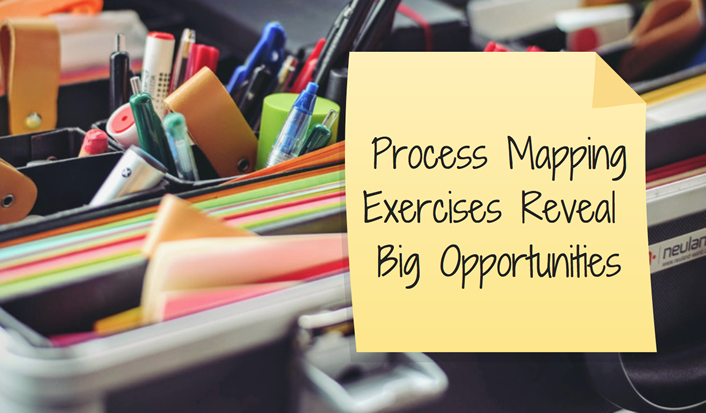
At the University of North Dakota, we’re committed to delivering a more student-centered experience. It’s one of the reasons our institution was selected from a national pool to receive an iPASS grant (integrated planning, advising and student success) through EDUCAUSE, with support from the Bill & Melinda Gates Foundation.
Recently, a group of us came together and asked ourselves how to engage faculty and staff in exploring the ways in which we impact our students, from the time they experience orientation all the way through to graduation.
Then came a second question, and within it, an answer: What better way than via a process mapping exercise?
And that’s exactly what we did! Modeled after the process mapping activity from the spring iPASS convening, the University of North Dakota Strategic Enrollment Management (SEM) Committee attempted to incorporate the exercise into its work. It was met with great success.
Here’s how it worked: members of the SEM group were tasked with thinking about all of the ways in which their faculty and staff interact with student — freshmen, sophomores, juniors, seniors — that influence retention and movement toward graduation. The mapping exercise consisted of SEM members plotting on large poster paper all of the activities and interactions written on sticky notes, categorizing the retention touchpoints throughout the calendar year. Each poster page represented a month of the year, and was segmented in order for the sticky notes to be placed based on student level that the retention activity reached.
Once the sticky notes were posted around the room, the SEM members reported out on their respective colleges’ current activities to enhance student retention and persistence. The visual representation of the sticky notes on the poster boards depicted months in which there are concerted efforts to make connections with students. These were clearly juxtaposed with months that had periods of little to no interaction. The ultimate goals of the exercise were to share the numerous activities that currently take place within the colleges, while identifying gaps in outreach and connections with students, and ultimately, determining the programs and services that should be incorporated as universal functions.
In order to be universally adopted, any efforts would need to have a positive impact on student engagement and persistence; for example, a Welcome/Open House activity at the beginning of each semester. (Right now, some of the colleges invest in an activity like this, while others do not.) We’ve continued to use this working list and the outcome of the process mapping exercise to reframe and refine our intentional connections with students. It’s all about focused efforts to enhance student experiences that will support their engagement and persistence toward graduation!
Thanks to the guidance and direction we received from the process mapping experience during the iPASS convening, this approach will help us with ongoing planning and future program development not only at the undergraduate level, but with our graduate student processes as well. (Below you can find the process mapping worksheet we developed to help prepare our SEM members for the exercise.)
Road Mapping the Student Experience from Orientation to Graduation
What activities occur in your College/School/Department/etc. that influence retention and graduation? These activities/initiatives could be interventions, advising, programs, services, letters, emails, etc.
Consider each of these populations separately as you think about your activities/initiatives:
-
Freshmen
-
Transfer students
-
Online students
-
Graduate/Professional students
-
International students
You may have to gather others in your College/School/Department/etc. to help you think about all of the touchpoints you have with the above student populations. Our entire SEM meeting on March 10 will be devoted to this process mapping exercise. Don’t worry about putting your activities/initiatives into any kind of order. We will do that when we go through the process mapping exercise as a group. Just come with your list.
Some questions to get you started:
-
What happens after a student attends an orientation program and returns to campus in the fall/spring semester?
-
Once a student is on campus, what activities/initiatives/programs/services do you provide for students each year of enrollment? (i.e., emails, phone calls, advising sessions, holds, welcome reception/open house activities/mentoring programs)
-
What do you do when a student doesn’t return for the next semester?
-
What do you do when a student doesn’t earn an appropriate grade in a course or courses to progress through the major?
-
Is advising mandatory in your area and when does the advising occur?
-
Who reaches out to students and when? (i.e., a Welcome email/letter from the Dean or academic advisor, early registration)
-
What do you do to celebrate a student’s accomplishments along the way and ultimately graduation?
These questions should not limit your thinking. Consider all that you do — which is much more than what these questions suggest!
As you consider your activities, identify the responsible party and whether technology (and what technology) is used to carry out that function or process.
Lisa Burger is Assistant Vice President for Student Academic Services at the University of North Dakota.
